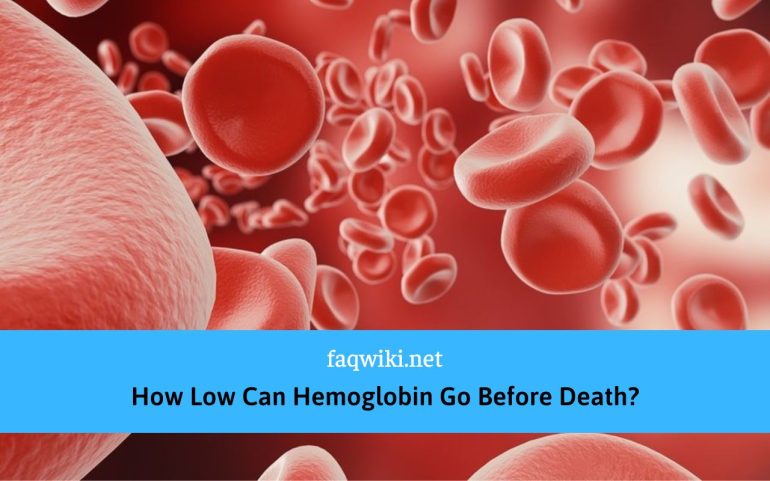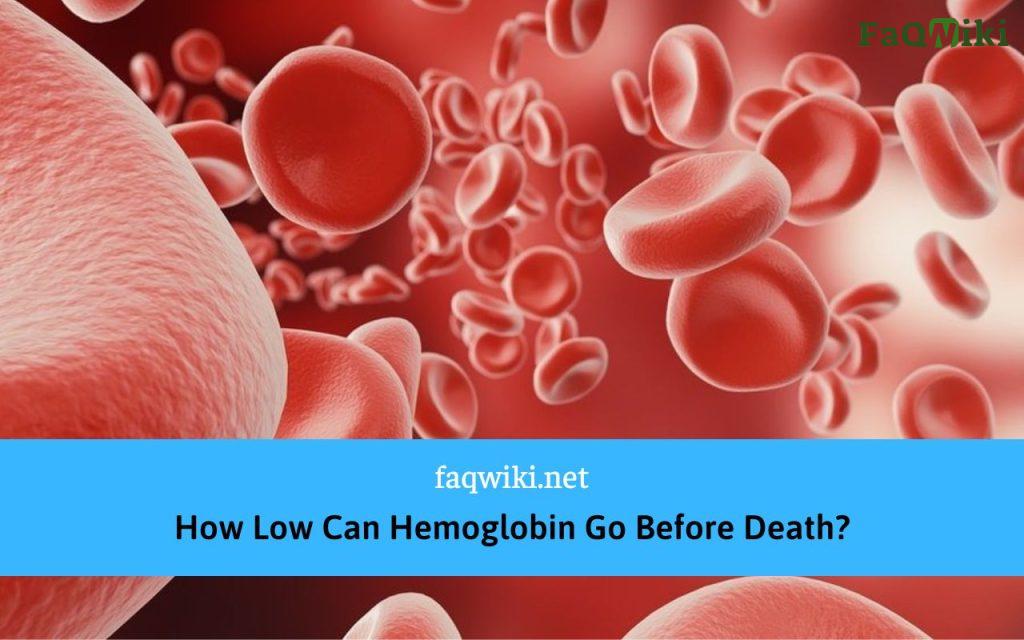How Low Can Hemoglobin Go Before Death?

How Low Can Hemoglobin Go Before Death? Hemoglobin is an essential protein in the blood responsible for transporting oxygen to different parts of the body. It is a vital component of the circulatory system and plays a crucial role in maintaining good health. The level of hemoglobin in the blood is used as a diagnostic tool to monitor the health of patients with various medical conditions, including anemia, kidney disease, and cancer. Hemoglobin levels can also be used to detect other underlying medical conditions that may not have been diagnosed yet. Understanding the critical levels of hemoglobin is important because low levels can lead to serious health consequences, including death.

Understanding Hemoglobin and Its Function
Hemoglobin is a protein found in red blood cells that carries oxygen from the lungs to the rest of the body. It is composed of four protein molecules (globulin chains) and four heme groups that contain iron. Hemoglobin is responsible for giving blood its red color and is the most abundant protein in red blood cells.
The primary function of hemoglobin is to transport oxygen from the lungs to the body’s tissues and organs. Oxygen binds to the heme groups in hemoglobin and is transported throughout the body via the circulatory system. Hemoglobin also plays a crucial role in removing carbon dioxide from the body’s tissues and organs. Carbon dioxide binds to the hemoglobin molecule and is transported back to the lungs for removal from the body.
Hemoglobin Levels
Normal hemoglobin levels vary depending on age, gender, and other factors. The average range for adult men is between 13.5 and 17.5 grams per deciliter (g/dL), while the average range for adult women is between 12.0 and 15.5 g/dL. Low hemoglobin levels, also known as anemia, can be caused by various factors, including poor nutrition, chronic medical conditions, blood loss, and cancer.
The symptoms of low hemoglobin levels may include fatigue, shortness of breath, weakness, pale skin, and dizziness. Diagnosis of low hemoglobin levels is typically done through a blood test. Treatment for low hemoglobin levels depends on the underlying cause and may involve iron supplements, blood transfusions, or other medical interventions.
How Low Can Hemoglobin Go Before Death?
Hemoglobin levels are critical for maintaining the proper functioning of the body’s organs and tissues. The connection between hemoglobin levels and mortality is well established, and low hemoglobin levels have been associated with increased morbidity and mortality rates. The threshold for hemoglobin levels before death varies depending on the individual and the underlying medical conditions.
In general, hemoglobin levels below 7 g/dL are considered critical and require immediate medical attention. Hemoglobin levels between 5-7 g/dL can result in symptoms such as shortness of breath, dizziness, and fatigue. Hemoglobin levels below 5 g/dL can result in serious health consequences, including organ failure and death.
The effects of low hemoglobin levels on the body can be severe, resulting in decreased oxygen levels, impaired immune function, and a compromised ability to fight infection. Medical intervention is necessary to manage low hemoglobin levels and prevent the potentially life-threatening consequences associated with them.
Factors Affecting Hemoglobin Levels
Hemoglobin levels can be affected by various medical conditions, including anemia, kidney disease, and cancer. A poor diet and lifestyle factors such as smoking and excessive alcohol consumption can also contribute to low hemoglobin levels.
A healthy diet rich in iron, folic acid, and vitamin B12 can help maintain healthy hemoglobin levels. Certain foods such as red meat, leafy green vegetables, and legumes are
rich in these nutrients and can help increase hemoglobin levels in the body. Regular exercise can also help improve hemoglobin levels by increasing the production of red blood cells in the body.
Medical conditions such as chronic kidney disease and cancer can also affect hemoglobin levels. In chronic kidney disease, the kidneys may not produce enough erythropoietin, a hormone responsible for stimulating red blood cell production, leading to anemia. In cancer, low hemoglobin levels can result from blood loss, chemotherapy, or the cancer itself. Treatment of underlying medical conditions is crucial for managing low hemoglobin levels and preventing complications.
Treatment for Low Hemoglobin Levels
Treatment for low hemoglobin levels depends on the underlying cause. In cases of iron deficiency anemia, iron supplements and dietary changes may be recommended. In severe cases, blood transfusions may be necessary to increase hemoglobin levels quickly. In some cases, medications such as erythropoietin-stimulating agents may be used to increase red blood cell production.
In cases where chronic medical conditions such as kidney disease or cancer are causing low hemoglobin levels, treating the underlying condition is critical for managing the anemia. Patients may need to undergo treatment such as chemotherapy, radiation therapy, or surgery, depending on the type and severity of the underlying medical condition.
Hemoglobin and Blood Donation
Donating blood is a common practice in many countries worldwide. One of the requirements for donating blood is having a sufficient hemoglobin level. In the United States, the American Red Cross requires a hemoglobin level of at least 12.5 g/dL for women and 13.0 g/dL for men to donate blood.
Blood donation can help save lives by providing blood for those in need, but it can also have health benefits for the donor. Donating blood can help reduce the risk of certain medical conditions such as heart disease, stroke, and certain types of cancer. However, donors with low hemoglobin levels may not be eligible to donate blood due to the potential health risks associated with low hemoglobin levels.
Conclusion
In conclusion, hemoglobin is a vital component of the circulatory system responsible for transporting oxygen throughout the body. Low hemoglobin levels can result in serious health consequences, including death. The threshold for hemoglobin levels before death varies depending on the individual and the underlying medical conditions. Treatment for low hemoglobin levels depends on the underlying cause and may involve iron supplements, blood transfusions, or other medical interventions. Maintaining healthy hemoglobin levels through a healthy diet and regular exercise is essential for good health. Regular blood donations can help save lives, but it is important to have sufficient hemoglobin levels to ensure the safety of both the donor and the recipient.
FAQs
What is hemoglobin?
Hemoglobin is a protein found in red blood cells responsible for carrying oxygen from the lungs to the body’s tissues and organs.
What are the symptoms of low hemoglobin levels?
Symptoms of low hemoglobin levels may include fatigue, shortness of breath, weakness, pale skin, and dizziness.
What is the threshold for hemoglobin levels before death?
Hemoglobin levels below 7 g/dL are considered critical and require immediate medical attention. Hemoglobin levels below 5 g/dL can result in serious health consequences, including organ failure and death.
How can low hemoglobin levels be treated?
Treatment for low hemoglobin levels depends on the underlying cause and may involve iron supplements, blood transfusions, or other medical interventions.
Can donating blood help increase hemoglobin levels?
Donating blood does not increase hemoglobin levels directly but can indirectly help maintain healthy hemoglobin levels by promoting the production of new red blood cells in the body.
